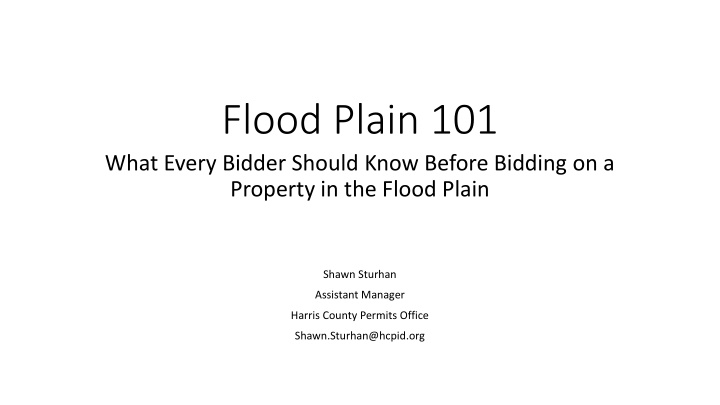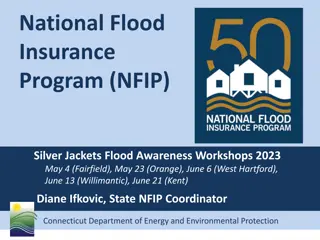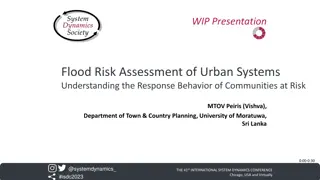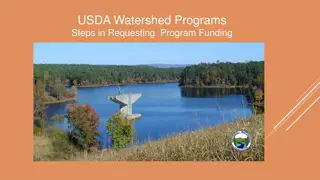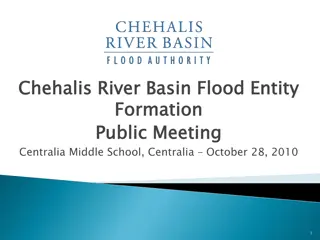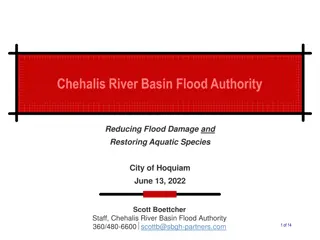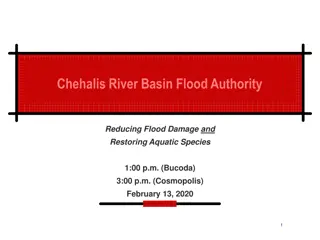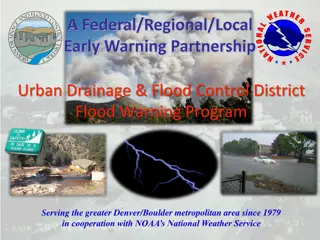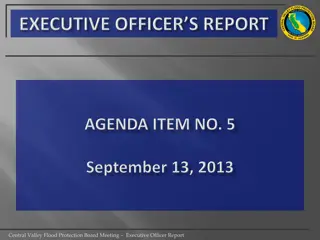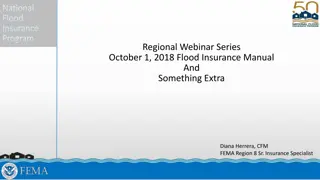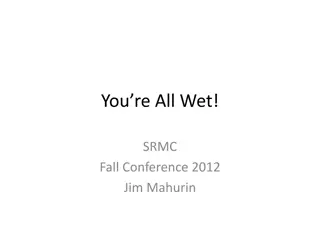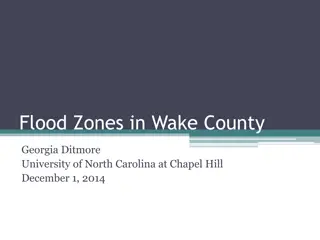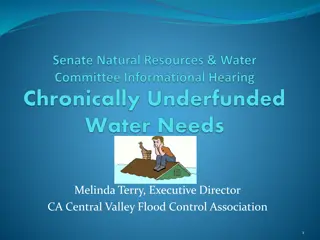Essential Facts for Bidders on Properties in Flood Plains
Comprehensive guide outlining key considerations for bidding on properties in flood plains, covering topics such as floodplain status determination, jurisdictional regulations, and floodway requirements. Includes insights on the roles of floodplain administrators and compliance with Harris County floodplain regulations.
Download Presentation

Please find below an Image/Link to download the presentation.
The content on the website is provided AS IS for your information and personal use only. It may not be sold, licensed, or shared on other websites without obtaining consent from the author.If you encounter any issues during the download, it is possible that the publisher has removed the file from their server.
You are allowed to download the files provided on this website for personal or commercial use, subject to the condition that they are used lawfully. All files are the property of their respective owners.
The content on the website is provided AS IS for your information and personal use only. It may not be sold, licensed, or shared on other websites without obtaining consent from the author.
E N D
Presentation Transcript
Flood Plain 101 What Every Bidder Should Know Before Bidding on a Property in the Flood Plain Shawn Sturhan Assistant Manager Harris County Permits Office Shawn.Sturhan@hcpid.org
TOPICS How to determine floodplain status of a property; What jurisdiction the property lies within; Floodplain management rules for unincorporated Harris County. Harris County Permits Office http://www.eng.hctx.net/permits
Flood Plain Status FEMA Flood Map Service Center(top link if you Google FEMA flood maps ) https://msc.fema.gov/portal/home
Jurisdiction Incorporated vs Unincorporated: who is the floodplain administrator? Incorporated means a tract that lies within the boundaries of a city, ie Houston, Jersey Village, Pasadena, etc. That city would be the Floodplain Administrator and issue all permits. Thus, their floodplain requirements must be met. Unincorporated means any tract that lies within Harris County but outside the boundaries of any city. Harris County would be the Floodplain Administrator and issue all permits. Thus, Harris County s floodplain requirements must be met.
No Net Fill - Any reduction in flood plain storage or conveyance capacity within the 1 percent or 100-year flood plain must be offset with a hydraulically equivalent (one-to-one) volume of mitigation sufficient to offset the reduction. The reduction may result from development or the placement of fill within the 1% flood plain or 100- year flood plain. Pier and Beam - No fill may be used to elevate structures in the 1 percent or 100-year flood plain. Structures may be constructed on an open foundation, such as piers, or on continuous foundation walls with properly sized and located openings.
Floodway Requirements The bottom of the lowest horizontal sill, beam or member supporting the structure in the floodway shall be at least thirty-six (36) inches above the 0.2 percent or 500-year flood elevation. A hydraulic analysis of pre- and proposed development conditions showing that no increase in the elevation of the base flood will occur as a result of the development The minimum embedment below natural grade for driven piles and drilled piers shall be twenty (20) feet Driven piles shall consist of either twelve (12) inch (minimum) square pre-stressed concrete piles or fourteen (14) inch (minimum) diameter steel pipe piles with a closed end. Additional construction requirements
Questions? Shawn Sturhan, P.E. Assistant Manager Harris County Permits Office 713-274-3753 Shawn.Sturhan@hcpid.org
